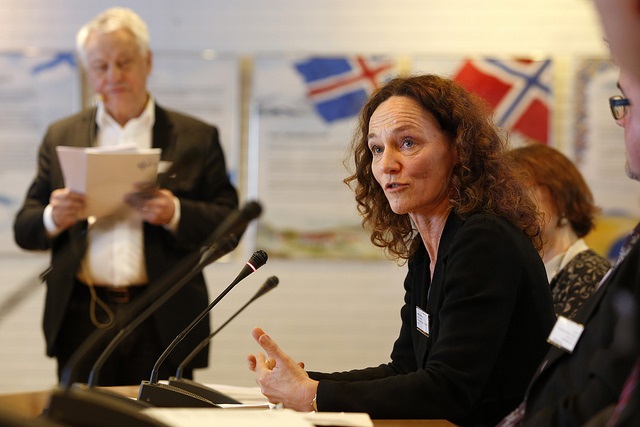

This article is part of our feature The Politics of Health Equity in Europe.
Norway has been described as the paradise of northern Europe, being one of the richest countries in the world and at the top of the United Nations Development Program’s Human Development Index for several years. Despite being rich, the Norwegian welfare system aims at providing equality of the highest standards for all their citizens. Our oil fund is increasing by a million (Norwegian kroners, or NOKs) per minute, we pay our taxes (relatively) gladly, and we love to highlight our egalitarian culture, and our comprehensive and generous welfare institutions to foreigners who cannot believe what we tell them.
We share the broad consensus that population health and health inequalities are dependent on how society is organized. Norway belongs to a group of countries commonly referred to as the Nordic welfare states, and has some distinctive features. Norway is built on the idea of social rights whereby all citizens have universal access to fairly generous services, benefits, and free health services.
Norway is built on the idea of social rights whereby all citizens have universal access to fairly generous services, benefits, and free health services.
The wage structure is relatively compressed, and taxes and public transfers result in an even more egalitarian income structure. Our commitment to full employment among both sexes has been a precondition for the financing of our welfare state. A stated goal for our model, developed mainly since the 1930s, has been to provide uniform social protection and a democratic right to decent living standards for the whole population. It has been a widespread notion that the Nordic welfare model would eliminate inequalities in living conditions and health.
How can inequalities in health possibly exist in such a society? For many years, it was believed that health inequalities could not exist in the most egalitarian societies. At least, that is what we thought in Norway. We did not even bother to collect information on educational attainment in our health surveys. When the Black Report became available to us, revealing substantial health inequalities in the United Kingdom, which shared many of our principles related to the national health system (actually, we copied and pasted this system), we started to question whether health inequalities could exist in our society as well. But the real shock would come later: Health inequalities really emerged as a topic in the Norwegian public debate in the aftermath of a cross-country study published in The Lancet in 1997.[1] The study documented the existence of considerable socio-economic health inequalities, above all in Norway and other Scandinavian countries.
Although disputed, the study was an eye-opener, and the existence of socio-economic health inequalities became increasingly acknowledged among political authorities. A large number of studies documenting health inequalities followed, and a white paper, “National Strategy to Reduce Social Inequalities in Health,” appeared in 2007.[2] A key message in this report was that health inequalities form a gradient that cuts across the entire population; it is not delimited to disadvantaged groups. The gradient, which is one of the big discoveries of public health, is often brought forward as an argument among those who support universal versus targeted health and welfare policies.
The development of comprehensive and coordinated policies addressing the issue of health inequalities followed along with monitoring guidelines and research initiatives. Norway quickly moved from “laggard to pioneer,” according to a leading Norwegian research figure.[3]
Today, we know that socio-economic inequalities in morbidity and mortality are not among the smallest in Norway compared with other European regions. This has spurred health researchers to evaluate the extent to which the Nordic welfare regime is capable of diminishing socio-economic health inequalities.[4] The conclusion that the Nordic welfare regime does not succeed in reducing health inequalities would have serious implications for health policy worldwide. If Norway cannot reduce health inequalities, who can?
The conclusion that the Nordic welfare regime does not succeed in reducing health inequalities would have serious implications for health policy worldwide. If Norway cannot reduce health inequalities, who can?
Typically, three reasons for the “Nordic paradox” have been discussed, all with quite different implications.
The first reason stresses causality. In more direct terms, it blames the system. For example, it may be the case that adversity is especially damaging when living in a prosperous and egalitarian society. Failing to make good use of the possibilities that have been offered to us may be more harmful in societies that are designed to reduce poverty and promote social mobility. In other terms, failing to succeed is easier to acknowledge when the conditions were bad in the first place. One cannot climb to the rooftop when there is no ladder around. Furthermore, even in case of no mobility, people with more flexible resources (such as money, knowledge, networks, power, and prestige) benefit more from egalitarianism—for instance, by making better use of the medical system. It could also be that the high quality of the medical system in the Nordic countries allows the less resourceful to survive longer, which they do in poor health. In this way, the well-functioning system can unintentionally cause larger socio-economic inequalities compared with countries with poorer health systems.
Other explanations look beyond the system. Perhaps the most popular (and rightly so) explanation for inequalities in Norway is related to health behavior, in particular smoking. The socio-economic gradient in smoking prevalence is much steeper in Norway compared with all other European countries, which translates into very large inequalities, particularly for cardiovascular mortality.
And what about migration? Like most other countries in Western Europe, the Nordic countries are faced with a relatively large influx of immigrants, who often have a low socio-economic position and also encounter problems in obtaining access to health services. We could have assumed that since both the average health and socio-economic position are relatively high in the Nordic countries, immigrants in our societies form a socially more selective group as compared with other countries, leading to a relatively steep social gradient in health. However, a recent study by Elstad et al.[5] suggests that less well-educated immigrants are less likely to die at a younger age than their Norwegian-born peers with the same educational level. Myth busted! We need to look elsewhere for better explanations.
The third strand of explanations point at artifact reasons. For example, it has been argued that variations in health inequalities can be explained by a mathematical rule rather than by substantial interpretations,[6] and that the focus on relative versus absolute inequalities have contributed to a common understanding that Nordic welfare states do not fare much better than other European countries in terms of health inequalities.
Naturally, these explanations have radically different implications. In terms of policies and interventions to reduce socio-economic health inequalities, our previous social democratic government put forward a combined strategy. They advocated a universal welfare strategy, but with additional efforts directed toward the most disadvantaged groups in society. They clearly acknowledged that in order to reduce health inequalities you must tackle the fundamental social conditions that contribute to these health inequalities in the first place. These include income inequalities as well as childhood and working conditions. An additional aim was to reduce differences in health behavior and health services utilization. Crudely summarized, the governmental response can be described as one of proportionate universalism. The key feature being universal welfare programs, with gradually more efforts directed toward the most marginalized groups in society. The social democratic government clearly stated that socio-economic health inequalities form a gradient through society; it is not merely a question of a poor marginalized group. They essentially acknowledged the governmental responsibility for these health inequalities. At the same time, it should be noted that the Swedish government, as well as the Danish government, emphasized the responsibility of the individual.
In 2013, there was a change from eight consecutive years of social democratic government to the current liberal government. Socio-economic inequalities in health are absent from the liberal political agenda, and a number of implemented and forthcoming policies may in fact be considered detrimental for the reduction of health inequalities.
But, politics is a struggle between conflicting ideologies and interests, and public health and health inequalities make up only a small part.
But, politics is a struggle between conflicting ideologies and interests, and public health and health inequalities make up only a small part. In addition, politics operates on a short timescale governed by elections, whereas public health requires long-term efforts in order to effect change.
An often-quoted hero of public health, the physician Rudolph Virchow (1821–1902) once stated that “Medicine is a social science, and politics nothing but medicine at a larger scale.” This resonates well with a more recent statement from Ilona Kickbusch: “We are all challenged to develop a public health approach that responds to the globalized world. The present global health crisis is not primarily one of disease, but one of governance.”[7]
Erik R. Sund is a research scientist at the Norwegian University of Science and Technology, in the department of Public Health and General Practice. Terje A Eikemo is a professor at the Norwegian University of Science and Technology, in the department of Sociology and Political Science. Eikemo is also the Editor-in-Chief of the Scandinavian Journal of Public Health.
Photo: Camilla Stoltenberg, Nordforsk | Flickr
References:
[1] Johan P. Mackenbach, A. E. Kunst, A. E. Cavelaars, F. Groenhof, and J. J. Geurts, “Socioeconomic Inequalities in Morbidity and Mortality in Western Europe: The EU Working Group on Socioeconomic Inequalities in Health,” The Lancet 349, no. 9066, June 7, 1997, 1655–9.
[2] Norwegian Ministry of Health and Care Services, “National Strategy to Reduce Social Inequalities in Health,” Oslo: Departementenes servicesenter, Report no. 20, 2007, accessed February 22, 2016. <www.regjeringen.no/en/topics/health-and-care/public-health/national-strategy-to-reduce-social-inequ/id512160/>.
[3] Espen Dahl and Marit Lie, “Policies to Tackle Health Inequalities in Norway: From Laggard to Pioneer?” International Journal of Health Services 39, no. 3, 2009, 509–23.
[4] Tim Huijts and Terje Andreas Eikemo “Causality, Social Selectivity or Artefacts? Why Socioeconomic Inequalities in Health are Not Smallest in the Nordic Countries,” European Journal of Public Health 19, no. 5 October 1, 2009, 452–3.
[5] Jon Ivar Elstad, Einar Øverbye, and Espen Dahl, “Prospective Register-Based Study of the Impact of Immigration on Educational Inequalities in Mortality in Norway,” BMC Public Health 15 (April 11, 2015): 364.
[6] James P. Scanlan, “Can We Actually Measure Health Disparities?” Chance 19, no. 2, March 1, 2006, 47–51.
[7] Ilona Kickbusch, “Mapping the Future of Public Health: Action on Global Health,” Canadian Journal of Public Health 97, no. 1, February 2006, 6–8.
Published on November 1, 2016.




